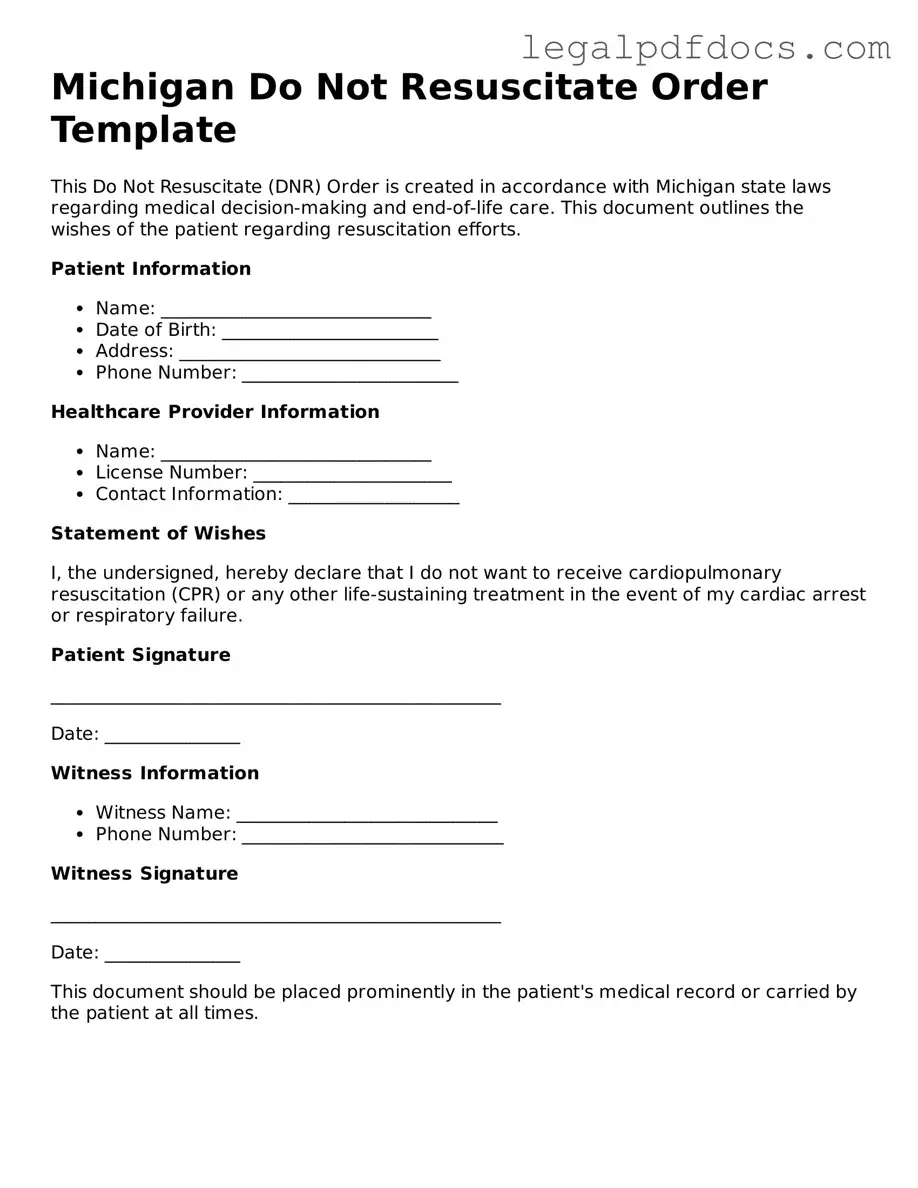Official Do Not Resuscitate Order Form for Michigan
A Michigan Do Not Resuscitate Order (DNR) form is a legal document that allows individuals to express their wishes regarding resuscitation efforts in the event of a medical emergency. By completing this form, a person can indicate that they do not want healthcare providers to perform cardiopulmonary resuscitation (CPR) or other life-saving measures. Understanding this form is crucial for ensuring that one’s healthcare preferences are respected, so consider filling it out by clicking the button below.
Open Do Not Resuscitate Order Editor Here
